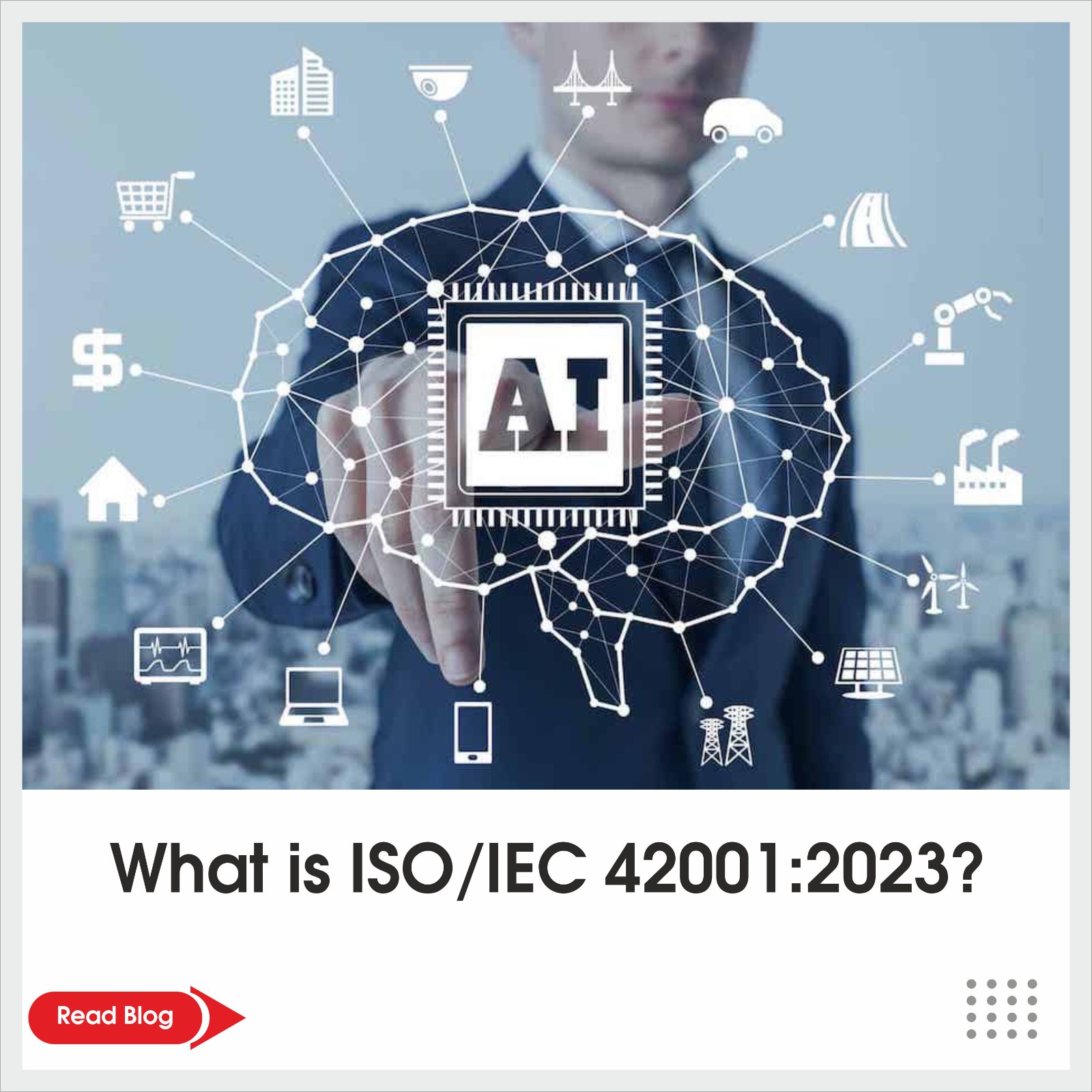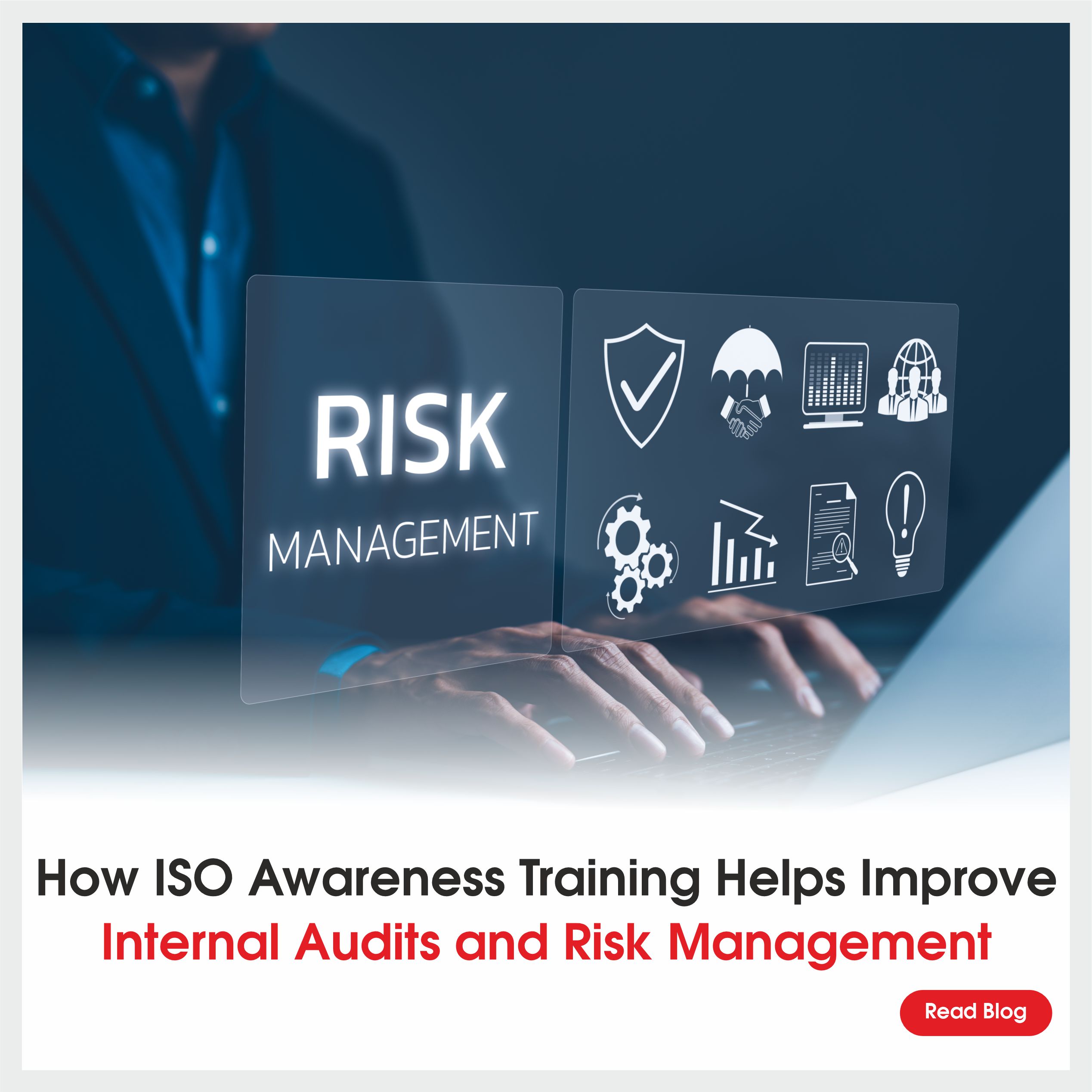ISO/IEC 42001 is a global standard that describes the requirements for establishing, implementing, maintaining, and continuously improving an Artificial Intelligence Management System (AIMS) in businesses. It is designed for enterprises that sell or utilize AI-powered products or services, ensuring that AI systems are developed and applied responsibly.
Importance of ISO/IEC 42001:2023
Addressing ethical issues is critical in the age of artificial intelligence, as judgments made by computers affect people’s lives. AI systems must be effective and compliant with moral standards, and ISO/IEC 42001 serves as a beacon in this regard. As a means of reducing possible social effects, it encourages enterprises to explore the ethical subtleties of AI responsibly.
Integrity is essential to the ethical use of artificial intelligence. By promoting transparent and understandable AI systems, ISO/IEC 42001 acknowledges this. To provide openness throughout the development and deployment lifecycle, the standard requires businesses to describe data sources, types utilized for AI training, and the resilience of AI systems.
Integrity is essential to the ethical use of artificial intelligence. By promoting transparent and understandable AI systems, ISO/IEC 42001 acknowledges this. To provide openness throughout the development and deployment lifecycle, the standard requires businesses to describe data sources, types utilized for AI training, and the resilience of AI systems.
The Purpose of ISO/IEC 42001:2023
ISO/IEC 42001 standard promotes an organization’s accountability on an ethical and moral level. At its core, it stipulates the appearance of a concerned organization responsible for upholding ethical practices in all its business operations and decision-making.
The practicalized standard is built to serve as a comprehensive guide for forming, implementing and sustaining the AI management system of an organization with a focus on continual improvement.
The major objective of the framework is to guide in the responsible development, application or use of Artificial Intelligence (AI) systems by organizations, and hence help them in the attainment of their goals, meeting the proper governing rules, observing the obligations they have towards the relevant stakeholders, and aligning the activities with the right expectations. In short, ISO/IEC 42001 is the process where the creation of AI that is responsible, its providing and the usage of AI is targeted and focused on.
The practicalized standard is built to serve as a comprehensive guide for forming, implementing and sustaining the AI management system of an organization with a focus on continual improvement.
The major objective of the framework is to guide in the responsible development, application or use of Artificial Intelligence (AI) systems by organizations, and hence help them in the attainment of their goals, meeting the proper governing rules, observing the obligations they have towards the relevant stakeholders, and aligning the activities with the right expectations. In short, ISO/IEC 42001 is the process where the creation of AI that is responsible, its providing and the usage of AI is targeted and focused on.
Here’s a breakdown of what this new standard addresses
AI Governance: This standard ISO/IEC 42001 is based on which the organizations can make policies and work procedures for AI governance. Such as the completion of these bounds comprises the clearly stated roles and procedures for decision-making and the strategies for the good management of risks.
Impact Assessment: Organizations should undertake an analysis of the societal, environmental, as well and individual impact of their AI systems. This allows the prevention and the prediction of misuse of these AI technologies and the guidance on their ethical development.
Data and Model Lifecycle Management: Effective data and model methodology are a vital part of the standards delineation. It covers a range of operations such as data collection including labelling and validation then it goes through a model development, training, evaluation and deployment process that is followed by continuous monitoring.
Diversity and Inclusiveness: The norm stresses the need to account for inclusiveness and the diversity of the AI systems. It requires organizations to examine AI technologies given how they may affect both human groups sharing similar backgrounds, qualities, and features.
Monitoring and Auditing: Similarly ISO/IEC 42001 stresses the fact of regular inspection and checking of AI systems. This is important for the graceful degradation of these systems, whenever a false trigger or an adjustment is needed, and the software engineers, technicians, and researchers respond in the right way to it.
Impact Assessment: Organizations should undertake an analysis of the societal, environmental, as well and individual impact of their AI systems. This allows the prevention and the prediction of misuse of these AI technologies and the guidance on their ethical development.
Data and Model Lifecycle Management: Effective data and model methodology are a vital part of the standards delineation. It covers a range of operations such as data collection including labelling and validation then it goes through a model development, training, evaluation and deployment process that is followed by continuous monitoring.
Diversity and Inclusiveness: The norm stresses the need to account for inclusiveness and the diversity of the AI systems. It requires organizations to examine AI technologies given how they may affect both human groups sharing similar backgrounds, qualities, and features.
Monitoring and Auditing: Similarly ISO/IEC 42001 stresses the fact of regular inspection and checking of AI systems. This is important for the graceful degradation of these systems, whenever a false trigger or an adjustment is needed, and the software engineers, technicians, and researchers respond in the right way to it.
Benefits of implementing ISO/IEC 42001:2023
The implementation of ISO/IEC 42001:2023 standard within organizations has multiple benefits:
- Enhances trust and credibility: An ISO/IEC 42001 certification implies that an organization has taken a responsible approach to AI practices, thereby increasing trust levels among clients and society in general.
- Competitive advantage: Those who follow the standard are ahead of their competitors in the AI-oriented field.
- Addresses pressing concerns: The standard ISO/IEC 42001 will be an efficient tool for the treatment of AI-related issues like fairness, transparency, and security.
- Flexible and adaptable: It is not too stringent and could be customized to the particular needs of an organization, thus making it more adaptable than sector-specific regulations.
- Increases consumer confidence: Consumers whose expectations are met through the implementation of ISO/IEC 42001:2023 standard get a feeling of trust towards AI products and services.
- Access to global markets: The standardization maintains uniformity, through which organizations can readily operate in global markets.
- Third-party seal of approval: If a certification is sought, it acts as a third-party guarantee of trustworthiness, signifying accountability.
- Contractual obligations: Some organizations may have contractual commitments to keep such certification.
- Internationally recognized risk mitigation: Certification underscore the dedication to internationally recognized techniques of risk prevention.
- Signal of priority: ISO/IEC 42001 sends a message to customers and stakeholders that a management system for AI, which is responsible, is the top priority.
- Internal governance: Setting the standards can strengthen the internal governance.
- Board Awareness: Standards highlight effective AI system governance to the board and hence promote decision-makers awareness and support at the apex level.
- Alignment with best practices: Even without direct certification, the reviewing of procedures as per ISO/IEC standards helps organizations continue to follow best practices and future trends in AI governance.
Key Features of ISO/IEC 42001
The flexible ISO/IEC 42001 becomes a pillar of AI governance. The certifiable standard delivers essential characteristics that expand artificial intelligence’s applicability across many settings, sectors, and future developments, as more and more businesses adopt it.
Verifiable Standard: Organizations are given a concrete certification process by ISO/IEC 42001. As a trust signal to partners, lawmakers, and consumers, independent auditors can evaluate and certify businesses. This certification attests to ethical and responsible AI management and indicates conformity to the standard’s concepts.
Innovation Support: ISO/IEC 42001 stands out in an era of constantly shifting regulations and rapid technological development because it actively promotes innovation rather than stifles it. Concerning future advancements in AI, the standard is made to be forward-looking. Organizations may build ethical AI without imposing prohibitive obstacles by using common principles.
Risk Management: The importance placed on a systematic approach to risk management by ISO/IEC 42001 is one of its main advantages. To guarantee that AI systems are both creative and dependable, the standard addresses hazards related to AI, such as data abuse and operational errors. The larger goal of responsible AI deployment is in line with this risk-centric approach.
Although the guidance provided in ISO/IEC 42001 is still high-level and allows for customisation, its flexibility makes it an invaluable resource for organizations and enterprises in a variety of industries. All of the characteristics of the standard work together to make it a useful tool for boosting self-assurance, encouraging creativity, and encouraging the appropriate application of artificial intelligence.
Verifiable Standard: Organizations are given a concrete certification process by ISO/IEC 42001. As a trust signal to partners, lawmakers, and consumers, independent auditors can evaluate and certify businesses. This certification attests to ethical and responsible AI management and indicates conformity to the standard’s concepts.
Innovation Support: ISO/IEC 42001 stands out in an era of constantly shifting regulations and rapid technological development because it actively promotes innovation rather than stifles it. Concerning future advancements in AI, the standard is made to be forward-looking. Organizations may build ethical AI without imposing prohibitive obstacles by using common principles.
Risk Management: The importance placed on a systematic approach to risk management by ISO/IEC 42001 is one of its main advantages. To guarantee that AI systems are both creative and dependable, the standard addresses hazards related to AI, such as data abuse and operational errors. The larger goal of responsible AI deployment is in line with this risk-centric approach.
Although the guidance provided in ISO/IEC 42001 is still high-level and allows for customisation, its flexibility makes it an invaluable resource for organizations and enterprises in a variety of industries. All of the characteristics of the standard work together to make it a useful tool for boosting self-assurance, encouraging creativity, and encouraging the appropriate application of artificial intelligence.
ISO/IEC 42001:2023 AI Safeguards
Moreover, with further development, the ISO/IEC 42001 guideline can facilitate the company’s security measures in risk management for particular procedures or systems where some AI features may be a danger.
- Automatic Decision-Making: Similarly, confidentiality is also concerned with the selection and functioning of the automated decision-making system which in some cases requires more than a traditional IT system.
- Data Analysis, Insight, and Machine Learning (ML): When it comes to replacing human-coded logic with these features, the process for designing systems gets changed as well as the justification and deployment which should be different in case of needing other protections.
- Continuous Learning: AI systems that carry out a constant type of learning modify their behaviour during usage and thus, need special care to make sure they still behave well despite being typical.
What are the requirements for ISO/IEC 42001 (AI)?
ISO/IEC 42001:2023 stipulates the rules on the management of organizations which are working on the establishment, operationalization and sustainability of their AI systems according to the regulations, or what is known as the management system of AI.
Achieving compliance with ISO/IEC 42001 requires paying attention to every single “Plan-Do-Check-Act” cycle of continual improvement. Organizations must build solid governance frameworks, take up appropriate risk control measures, and change their approach to AI management continuously in light of ongoing technological changes. By applying risk management dynamics to various processes through automated platforms, one can simplify compliance initiatives, and automate data collection and consolidating tasks, while also providing comprehensive reports of outcomes to gauge the results effectively.
ISO/IEC 42001 defines requirements, which include:
Such prerequisites help organisations to set up a vibrant system of managing AI systems suitably, synced with organisational goals and socially acceptable principles.
Achieving compliance with ISO/IEC 42001 requires paying attention to every single “Plan-Do-Check-Act” cycle of continual improvement. Organizations must build solid governance frameworks, take up appropriate risk control measures, and change their approach to AI management continuously in light of ongoing technological changes. By applying risk management dynamics to various processes through automated platforms, one can simplify compliance initiatives, and automate data collection and consolidating tasks, while also providing comprehensive reports of outcomes to gauge the results effectively.
ISO/IEC 42001 defines requirements, which include:
- Context: Knowing the face of the organization and specifying the extent to which AI can be used in management.
- Leadership: Key foundation layers entail getting leadership commitment, implementing policies, assigning roles, responsibilities, and authorities.
- Planning: Eliminating risks and taking advantage of the opportunities, setting AI objectives, and planning changes for the future.
- Support: Resources provision, capacity building, awareness, communication, and evidence-based information.
- Operation: Making AI operations and control plans, doing AI risky points and side effects analysis.
- Performance Evaluation: Carrying out those processes internally to have better control over them (internal audits and management reviews).
- Continual Improvement: To solve this issue, periodical improvement, conformity, and corrective actions should be done.
Such prerequisites help organisations to set up a vibrant system of managing AI systems suitably, synced with organisational goals and socially acceptable principles.




